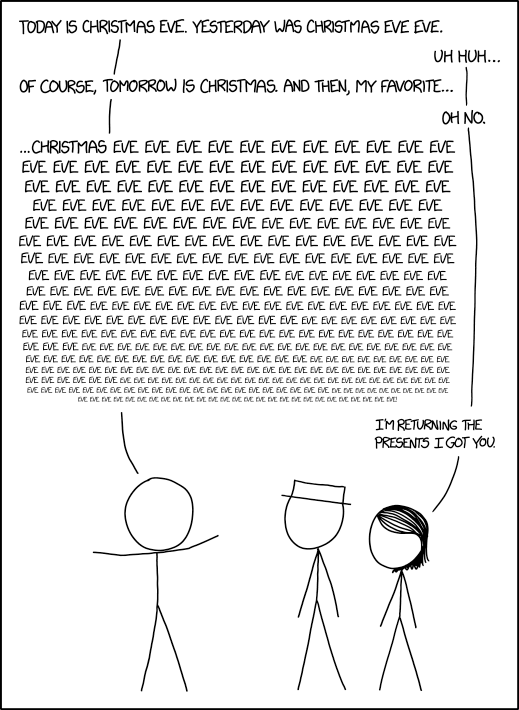Friday, January 11, 2019
Yes, this is what a content bubble looks like
One of my New Year’s resolutions for 2018 was to watch more television. I’ve slowly increased my TV viewing over the last couple of years in response to the great stuff out there. Now it’s kind of weird, as the consensus is that there’s a lot of just OK shows and not much that’s really that compelling compared to the prestige dramas of earlier this decade. But I’m so far behind that this really barely matters to me.
There's a lot to unpack here.
One. While most of us are making New Year's resolutions to watch less television, Loomis is one of the very few who actually resolved to watch more, particularly those buzz-friendly critical darlings that the major streaming services are spending so heavily on. He is the ideal consumer with respect to this business model, and yet even he acknowledges that he will never be able to catch up with all the shows on his to-see list.
The dirty little not-so-secret secret of most of these must-see shows is that very few people actually watch them. For all their awards and feature stories, they remain more talked about than viewed. We could have an interesting discussion about their role in brand building and other indirect effects, but even with those taken into account, you have to have serious concerns about a business strategy that spends billions of dollars producing shows with such tiny audiences.
Two. Yes, N=1, but the perception that quality is slacking off has tremendously disturbing implications for the business model. For a number of years, the formula for generating awards, buzz, and perceived quality was fairly simple. Obviously, making good shows did help, but the key to getting noticed was hiring big-name talent, spending stunning amounts on PR and marketing, and sticking as close as possible to a handful of genres that lent themselves to extensive coverage and favorable reviews ("it's a dark, edgy crime drama with a quirky sense of humor, ""it's a dark, mindbending science-fiction drama with a quirky sense of humor"). Now, though, there is reason to believe that through a combination of saturation and the half-life of novelty, the formula is losing its effectiveness. That means even more obscene amounts of money will have to be spent to create the same impact.
Three. Finally, as we have said many times before, content accumulates. The 500 or so series that are currently in production are not just competing against each other, but against everything that has come before. If someone like Loomis who is almost genetically engineered to seek out new, trendy shows is opting instead for something that has been off the air for years like the Sopranos, investors should definitely be taking note.

















